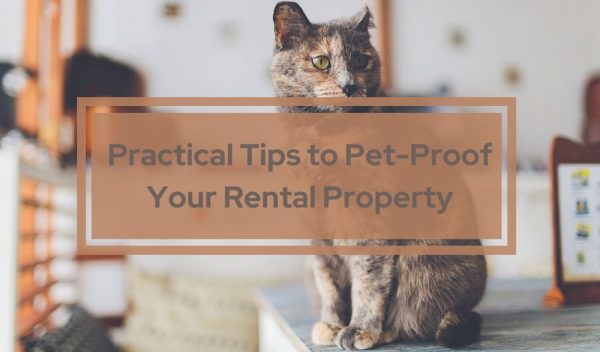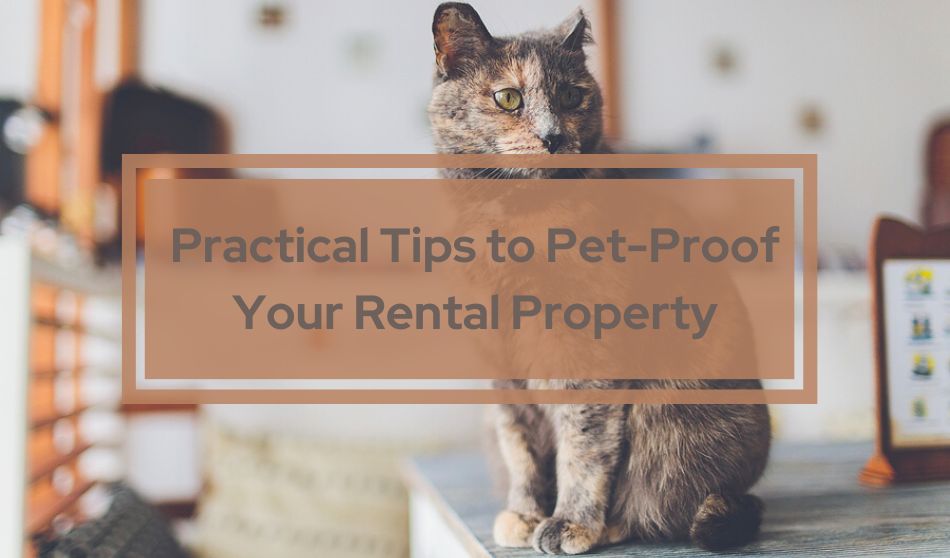
If you own a rental property, most of the time your renters own a pet. According to the American Society for the Prevention of Cruelty to animals, an estimated 78 million dogs and 85.8 million cats are owned by Americans. In the United States, 44% of households own a dog, while 35% have a cat.
Having a furry companion in your rental property can be comforting and cute for your tenants, but it can also have a significant impact on the property you own. Allowing pets into your rental is one of the great ways to attract future renters since only an average of 55% of landlords, allow pets into their properties.
If you are thinking of using this strategy to gather more tenants into your property, you might want to pet-proof your rental property. In this article, we will help you pet-proof your rental property to avoid further problems and issues caused by a beloved furry companion.
Pet-proofing your Rental Property
Allowing pets into your rental property can expand the number of potential tenants. Since there are limited pet-friendly rentals available, those who own pets will opt for a pet-friendly rental even with additional expenses, which will also increase the contract renewal of your tenants. However, allowing pets may cause pet damage to your property that’s why you need to make sure that your rental property is fully pet-proofed. Here are some tips that you can use when pet-proofing your rental property.
Install Pet-friendly floors
If you are decided to allow pets into your rental, you must be ready for the damages that they can cause. For starters, make sure that your flooring can withstand scratching, feces, urine, and other types of damage that can be caused by pets.
There are different varieties of floorings that are suitable for pets, such as laminate floors, porcelain tiles, hardwood floors, high-performance carpeting, vinyl, and linoleum. Using these types of floorings will allow your tenant to clean and maintain their floors throughout their stay easily.
Pet-friendly finishings
Aside from the floors, you should also reconsider the type and color of your rental finishing. Since some types and colors are hard to clean, try to consider using semigloss paint, satin, or eggshell finish for your finishings. These types of paints provide an elegant look and are also easy to clean, especially for rental properties that allow pets.
Add a Pet Policy to your Lease Agreement
Before allowing pets in your rental property, make sure that you have a Pet Policy included in your Lease Agreement. Including a Pet Policy into your lease and having your tenants sign it, will assure you that they understand and will follow your rules for having pets with them.
You can also customize the Pet Policy by indicating pet-related clauses such as:
- Pet screening qualifications before the tenancy
- Placing litter boxes on top of a plastic floor covering
- Pets should always wear an ID tag
- Disposal of the pet’s waste
- Pet insurance coverage
Stating these direct instructions into your lease will help your tenants to become responsible with their pets and avoid damages to your property.
Pet Charge
Rental Property owners are concerned about the cost of maintaining a pet-friendly rental. It is common for landlords to charge pet owners an additional rental fee for their pets. You can also ask for a pet security deposit and decide whether it is refundable or not. Including pet, charges will serve as a safety precaution against the cost of repairing extensive pet damage. Just make sure you are aware of your rental’s local and state laws regarding pet fees and deposits to ensure you are compliant before instigating a policy.
Pet Limitations
Before deciding on the pet limitations that you will impose on your rental property, try talking to other pet-friendly rental owners. Ask about the pros and cons of allowing pets within the property. By asking about their opinion and experiences, you’ll gather enough information to create your pet restrictions. You can decide what kind of animals are allowed to enter your rental, especially if certain animals make you feel nervous or scared. You can also impose pet weight limits and pet quantity restrictions. It is recommended that you to interview to assess a tenant’s pet; through the interview, you can get a feel for the pet’s nature, as well as, ask how much the dog barks to know how much pets could disturb other tenants on your property.
Allowing pets in your rental property can offer benefits for you and your business. But before doing so, make sure that you and your property are ready for them. Pet-proofing your rental property is the best way to prepare and protect your property from any form of damage a pet can cause.






